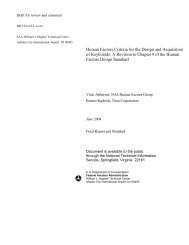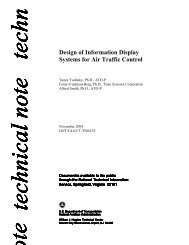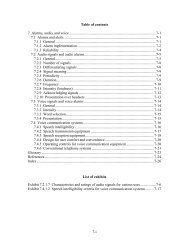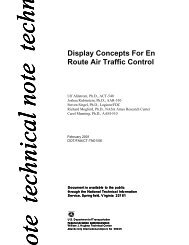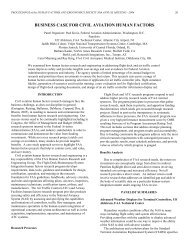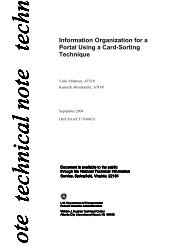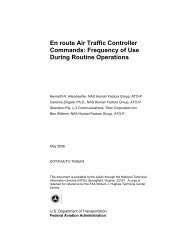Chapter 14. Anthropometry and Biomechanics - FAA
Chapter 14. Anthropometry and Biomechanics - FAA
Chapter 14. Anthropometry and Biomechanics - FAA
Create successful ePaper yourself
Turn your PDF publications into a flip-book with our unique Google optimized e-Paper software.
HFDS 2003 (amended Oct 2009)<strong>Chapter</strong> 14 <strong>Anthropometry</strong> <strong>and</strong> biomechanics• <strong>14.</strong>1.4.4 Effects of clothing. Because most anthropometric datapresented in this document <strong>and</strong> in other data sources representnude body measurements (unless otherwise indicated), suitableallowances shall be made for light, medium, or heavy clothing<strong>and</strong> for any special protective equipment that is worn. Note thatmeasurements of <strong>FAA</strong> Technical Operations Personnel containedin Appendix B represent clothed body measurements. Exhibit<strong>14.</strong>1.4.4 illustrates the additive effects of clothing on static bodydimensions <strong>and</strong> shows the 95th percentile gloved h<strong>and</strong> measures.If special items of protective clothing or equipment are involved,the effects shall be measured in positions required by the users'tasks. The effects on the extremes of the population distributionshall be determined. [Source: Department of Defense (MIL-HDBK-759B), 1992; Johnson, 1984]Discussion. Nude dimension <strong>and</strong> light clothing can beregarded as synonymous for practical purposes.Additional information on the changes in anthropometricmeasurement values imposed by different clothingensembles is found in Johnson, 1984.Exhibit <strong>14.</strong>1.4.4 Additive effects of clothing on anthropometric measures14-9



